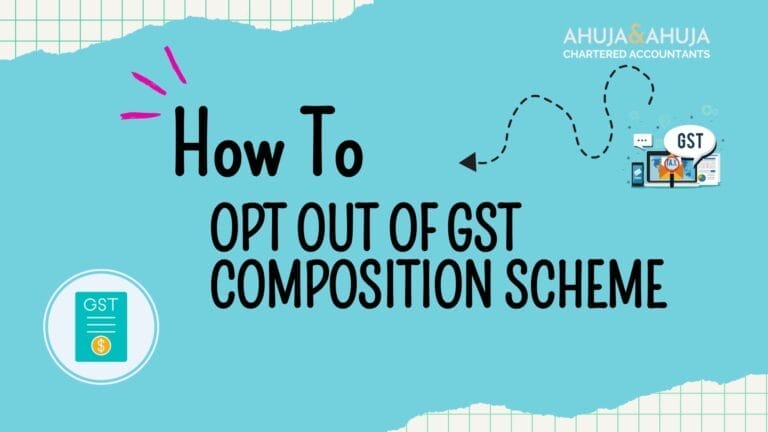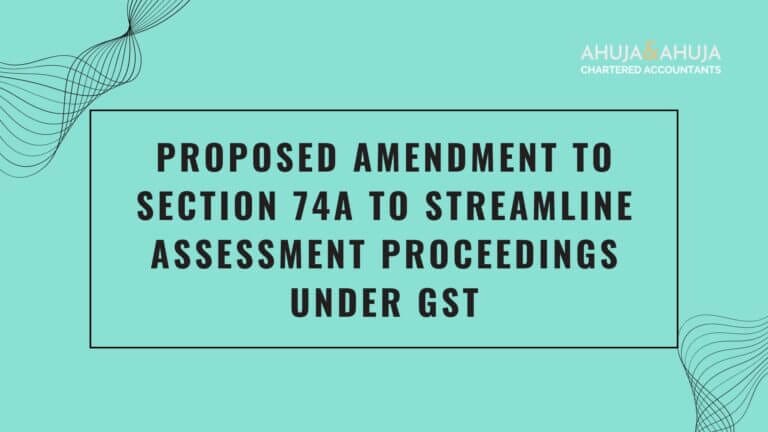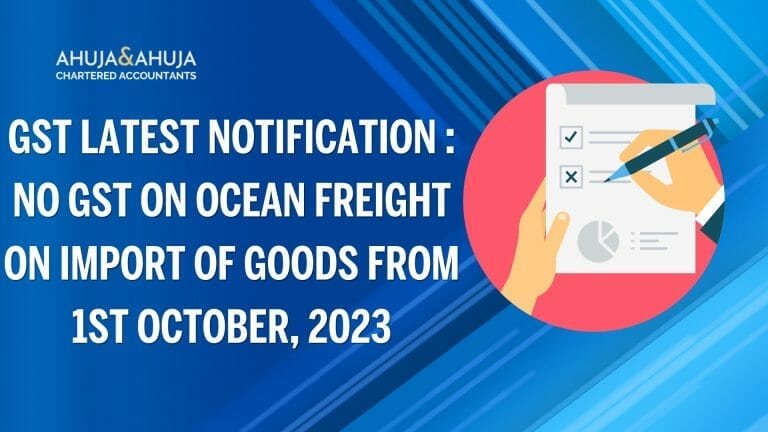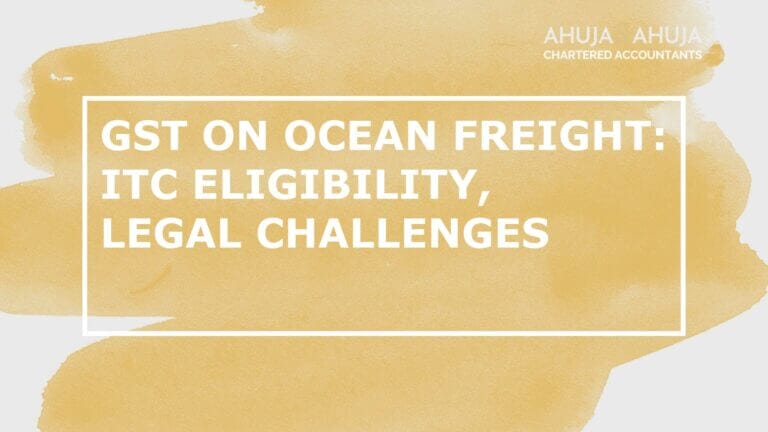Unveiling the Impact: Fake Invoices in GST
In the complex world of taxation, particularly under systems like the Goods and Services Tax (GST) and various income tax provisions, the use of fraudulent documents such as fake invoices presents significant challenges.
Since the rollout of GST, there has been a noticeable rise in the number of GST fraud cases, largely revolving around the utilization of fake invoices.
This article delves into the intricacies of these fraudulent practices, explains their repercussions, and highlights preventive measures.
Fake invoices are not just paper trails left behind; they represent a profound breach of legal and fiscal responsibilities, disrupting the economic fabric of society.
Understanding and curbing these activities are not only crucial for maintaining the integrity of the tax system but also for ensuring the equitable distribution of fiscal duties among citizens and businesses.
Understanding Fake Invoices
What Constitutes a Fake Invoice?
A fake invoice can be defined as a document issued to show a sale transaction without the actual delivery of goods or services or without the actual movement of goods as stipulated in GST regulations.
These documents are often used to falsely claim input tax credits (ITC), which are meant to offset GST liabilities on outbound supplies.
With neither goods nor services backing these invoices, they undermine the very foundation of the GST system, leading to significant revenue losses for the government.
The typical manifestations of fake invoices in the GST landscape include:
- Invoices without corresponding delivery: These are raised where payments are shown as being made through ITC, which in reality does not exist.
- Misdirected goods: In some cases, invoices are issued for goods that are sent to someone other than the stated recipient, often to siphon off goods or funnel them into grey markets.
- Circular trading through dummy firms: This involves a series of shell companies that issue invoices among themselves, creating a loop of credit transfer without any actual supply of goods or services. Such activities make it quite difficult to trace the original supplier or the end recipient, complicating legal proceedings.
The GST and Legal Framework
The legal framework under the GST, such as the stipulations in Section 15 regarding the value of taxable supply, is designed to ensure that tax is levied correctly on every transaction.
However, the misuse of fake invoices bypasses this framework, leading to undervaluation, tax credit frauds, and numerous other discrepancies that affect the entire supply chain.
Impact on Businesses and Economy
Using fake invoices can lead not only to substantial tax losses but also distort the financial and economic data of a country.
This fraudulent practice results in:
- Unfair competition: Businesses that adhere to tax laws often find themselves at a competitive disadvantage compared to those who evade taxes through fraudulent means.
- Erosion of trust: Frequent occurrences of tax fraud, including fake invoicing, erode trust in the financial system, potentially deterring foreign investment and economic contributions from the formal sector.
As we explored the definitions, types, and immediate impacts of fake invoices in the realms of GST and income taxes, it becomes evident that these practices pose significant risks not only to the revenue system but also to the overall economic integrity.
Stay tuned for an in-depth exploration of the methods used to detect these fraudulent practices and the steps authorities are taking to curb these activities, including enhancing the e-invoice integration into the E-way bill generation set to launch in March 2024.
For businesses looking to navigate the complexities of GST compliance, consider consulting comprehensive GST services or seeking assistance with GST registration and return filing to ensure adherence to legal standards.
Motivations Behind the Creation and Use of Fake Invoices
Why Do Entities Engage in Fake Invoice Frauds?
Understanding the motivations behind the use of fake invoices is crucial for developing effective deterrents.
Here are some of the primary reasons entities might engage in such fraudulent activities:
- Tax Evasion: By using fake invoices to claim unwarranted input tax credits, businesses can significantly reduce their GST liabilities. This is perhaps the most straightforward motive – paying less tax increases net profits illegally.
- Cash Flow Management: In some cases, entities use fake invoices to manage cash flows. They report higher expenses and lower profits, thereby reducing their overall income tax liability.
- Financial Window Dressing: Entities often inflate turnover and other financial metrics to meet the criteria for bank loans, government contracts, or even to boost the company’s valuation during events like initial public offerings or mergers and acquisitions.
- Laundering Money: Fake invoices can be used as a tool for money laundering, converting black money into white by showing non-existent sales or purchases.
Each of these motivations not only results in loss of revenue for the government but also creates an uneven playing field in the market, where law-abiding businesses are at a disadvantage.
Detection and Legal Consequences of Using Fake Invoices
Detecting fake invoices is a challenge, primarily due to the sophistication of the methods used by fraudsters.
However, with the advancement of technology and rigorous legal frameworks, authorities are increasingly capable of identifying and penalizing culprits.
Detection Techniques:
- Data Analytics: The use of advanced data analytics tools helps in comparing patterns of transactions across various parameters like turnover, tax payments, and others.
- Cross-Verification of Documents: Matching details provided in GST filings with corresponding transportation records and bank transactions can highlight discrepancies.
- Risk-Based Scrutiny: Entities that have a history of non-compliance or belong to sectors prone to tax evasion are often subjected to more rigorous scrutiny.
Legal Repercussions:
The legal consequences of issuing or utilizing fake invoices can be severe, including hefty fines, cancellation of GST registration, and even imprisonment.
The CGST Act provides specific penalties for fraud, falsification of financial information, and misuse of tax credits.
Preventative Measures and Solutions
To combat the threat posed by fake invoices, both governmental bodies and businesses need to take proactive steps.
Here are some recommended strategies:
- Stringent Verification Processes: Enhancing the process of GST registration and invoice verification can help nip fraudulent activities in the bud.
- Regular Audits: Frequent and random audits can deter businesses from engaging in such practices due to the fear of detection.
- Enhanced Inter-Departmental Coordination: Better coordination between different tax authorities can prevent jurisdictional loopholes from being exploited.
Case Studies and Real-World Examples
Exploring Real Instances of Fake Invoice Fraud
To better understand the methodologies used in fake invoice frauds and their significant impact on the economic system, let’s delve into specific case studies that highlight both the creativity of fraudsters and the vigilance of the tax authorities.
Case Study 1: The Shell Company Network
In one notable example, a network of over 30 shell companies was established to issue fake invoices totalling hundreds of crores — with no actual supply of goods or services.
These companies were interconnected through circular trading patterns to create inflated turnover and claim undeserved ITC.
Through meticulous investigation, authorities were able to trace the transaction trails, leading to several arrests and the recovery of significant amounts of tax revenue.
Case Study 2: The Export Rebate Scheme
Another common fraud involves manipulating exporting goods using fake invoices to claim GST refunds as export rebates.
In this scenario, goods were never actually exported; instead, fake shipping documents and invoices were created to show exports and claim rebates fraudulently.
FAQs on Fake Invoices
Answering Common Questions
How can I identify a fake invoice?
- Check for GSTIN accuracy and whether the invoiced company’s details match public records.
- Be wary of invoices that lack detailed descriptions of goods and services or have rounded-off amounts which seem too generic.
What should I do if I suspect an invoice is fake?
- Do not use the invoice to claim ITC.
- Report the matter to the nearest GST office or through the anti-fraud hotline.
- Consult with a GST professional to get advice on the proper course of action.
Can I be held liable for unknowingly using a fake invoice?
- Yes, if it is proven that due diligence was not performed. It is crucial to verify all invoices, especially those from new or unknown vendors.
Are there any technological solutions to detect fake invoices?
- Many software solutions are now integrated with AI and machine learning to detect anomalies in tax filings and invoice patterns automatically. Implementation of advanced e-invoice integration systems also helps in curbing the generation of fake invoices.
Conclusion
The battle against fake invoices is ongoing, with both the authorities and businesses needing to stay continually vigilant.
Enhancing legal measures, employing advanced technologies, and fostering an ethical business environment are critical steps toward mitigating the risks associated with fake invoices in GST and income tax frameworks.
By understanding the dynamics of how these fraudulent practices are conducted, the motivations behind them, and the best methods to detect and prevent them, businesses and individuals can better protect themselves from becoming unwitting participants in tax fraud schemes.
Stay informed, stay compliant, and contribute to a healthier economic environment by adhering to truthful and transparent business practices.
Disclaimer
The materials provided herein are solely for educational and informational purposes. No attorney/professional-client relationship is created when you access or use the site or the materials. The information presented on this site does not constitute legal or professional advice and should not be relied upon for such purposes or used as a substitute for professional or legal advice.







